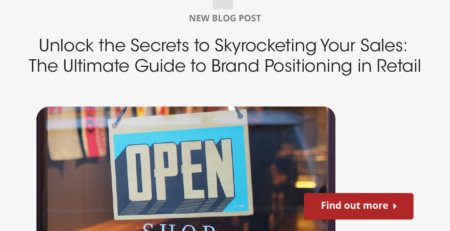What is Outbound Marketing & How Can You Use it for Hiring?
In the realm of recruiting, much like in marketing, the focus often revolves around delivering the right message to the right audience at the right time. While the common perception is that marketing primarily aims for increased leads and sales, valuable insights can be drawn from marketing strategies when applied to other aspects of company growth.
Recruitment, as a critical facet of company expansion, can benefit from lessons in marketing, particularly when considering inbound and outbound strategies.
Inbound recruiting adopts a long-term and more passive approach, while outbound recruiting operates in contrast. To gain a deeper understanding of outbound recruiting and how it can be effectively employed in hiring practices, it is beneficial to first examine the principles of inbound recruiting and its functioning.
What is Inbound Marketing
Inbound marketing is all about drawing in potential customers (and potential candidates). This includes people who know they have a need and are actively looking to fill that need.
In their research, they’ll stumble across several different businesses offering solutions to their problem– one of these businesses might be yours. Potential customers will either find companies or make their selection based on how visible the business is and the sentiment surrounding it.
Things like blogging, creating an email list, search engine optimization, and becoming a thought leader in a specific niche will all draw people to not only notice you but also choose your business out of all the other competition.
While this tends to be cheaper than outbound marketing, it still requires a lot of upfront work for results that may not become apparent for several years. It takes time to build rapport and get your word out there through this more passive approach, and so it’s considered to be a long-term marketing method. The effort also needs to be consistent, or else it will harm the messaging and the image.
What is Outbound Marketing
While inbound marketing is a passive approach, outbound marketing is an active approach. This involves reaching out to potential customers who may or may not know they have a particular problem they need solving.
This involves things like putting up ads in newspapers, magazines, and networks, or plastering out flyers and billboards. It also involves cold emailing and cold calling potential customers who might be interested in the product or service your business offers.
Both of these methods are criticized for different reasons. Ads, for example, sometimes cast too wide of a net and don’t do much to target the audience you’re looking for. On the other hand, cold calling is seen as intrusive and annoying to deal with, even though it casts a much narrower net than other outbound marketing methods.
Along with potentially being annoying, outbound marketing also tends to be more expensive. The plus side is that your message is out there immediately, and you can also receive feedback almost immediately. Not only can you gauge interest in what you’re offering, but also make any tweaks right away because of the quick action and response. This strategy also underscores the importance of getting your message out to the right people, instead of letting it seep into general audiences who might find it annoying or be completely uninterested.
How this Relates to Recruitment
We can learn a lot from these two different marketing approaches when it comes down to our hiring practices.
There is both inbound recruitment and outbound recruitment that each have their advantages and disadvantages, depending on your specific situation and needs. Talent acquisition consists of recruitment marketing and recruiting itself, and outbound and inbound hiring focus on these two separate steps. In order, the talent acquisition process can be seen as:
- Awareness
- Consideration
- Interest
- Application
- Selection
- Hire
While we’ll be mainly focusing on outbound recruitment, understanding inbound first will help us get a better grasp on the outbound side of things.
Inbound Recruitment
Like inbound marketing, inbound recruitment is a more passive approach where potential candidates will find the open position through their own efforts.
The company is involved in the process of fashioning its employer branding and making recruitment marketing efforts. This includes posting positions on career sites such as LinkedIn and making social media posts.
This recruitment method deals primarily with the first three steps in the talent acquisition pipeline: the awareness of the brand or position, the consideration of the position, and then interest in the position.
This is seen as a “slow burn” approach that takes time to cultivate properly, much like inbound marketing. There’s a need to consistently put your message out there and build a pool of interested candidates that you can choose from when a position becomes open. Not only does this attract higher-quality candidates, but it’s also more cost-effective than outbound recruitment. This is the long-term solution that gets consistent results into the future.
However, it doesn’t provide a solution if you need results quickly.

Outbound Recruitment
Outbound recruitment is the more active method of the two. It involves skipping over the awareness/consideration/interest portion of talent acquisition and putting candidates straight into the application spot in the pipeline.
This is the go-to method if there’s an immediate need for candidates to fill a position. Rather than relying on potential candidates to find the position, the company will instead rely on cold calling, cold emails, and web sourcing for talent. In this scenario, the talent is seen as “passive” and must be convinced to apply for the position by showing that it’s well suited for them.
Although the cost is higher when compared to inbound recruitment, it does yield results immediately. On the other hand, it also comes with the other drawbacks of outbound marketing (i.e., being seen as annoying).
The Advantages of Inbound Hiring
One of the biggest benefits of inbound hiring is the fact that there’s significantly less time and energy needed upfront to get things off the ground.
There’s no need to start scouting for potential talent and every interested candidate doesn’t have to be contacted (saving time). Nevertheless, the time and energy still need to be put in on a consistent basis over the long term. Brand messaging and employer sentiments have to be built and nurtured over years, and well-tuned advertisements have to target the people you’re looking for.
This leads to the second benefit of inbound recruiting: the fantastic long-term effects that come along with it. Every time a position needs to be filled, there isn’t any need to start from scratch with the recruiting process. There’s already going to be a pool of interested candidates that are not only very interested in working for the company but are also highly talented.
With inbound marketing, you also get a wider selection of people applying for the position. Not only is this a numbers game, since more people will be vying for the open position in your company, but it will also attract a more diverse range of people that can bring fresh new ideas to the organization. These factors won’t just give the choice of the most talented candidates, but also a unique and diverse range of them.
The Advantages of Outbound Hiring
Although outbound hiring takes more resources from the get-go, there doesn’t have to be as much time spent during the selection process. If your organization is personally reaching out to candidates who might be interested, then there should already be an assumption that they’d be good for the position. By including the vetting process from the beginning, there’s less time spent on it later on.
This is of course due to targeting specific people. It’s not necessary to wait for the perfect person to come along, because you already know who the perfect candidate is. When it comes to positions that require very specific skills, outbound recruiting is definitely the way to go if you want the position filled in a timely manner.
Lastly, the specificity and proactive nature of outbound recruitment allows for a personal touch to pervade all your interactions with the candidate. Not only does this make your organization seem friendlier to candidates, but it also gets the employee-employer relationship off on the right foot. If you’re looking to both attract and retain special talent, then outbound recruitment is the method for the job.
However, it’s not as cut and dry as choosing between Option A and Option B. Nevertheless, there will be a strategy that works best for you and your situation.
Which One is Better?
Each method has its strengths and weaknesses and its effectiveness will depend on individual situations and needs. Gauging what’s best for you is the most important part of deciding on a path.
Although inbound marketing has been the traditional approach that’s used most often, companies are increasingly relying on outbound marketing to fill their empty positions. This is partly due to today’s hiring climate, where there are more open positions than talented candidates seeking positions. That means companies need to spend more resources and be more proactive in seeking out talent in their talent acquisition campaigns.
However, you also don’t necessarily need to focus on one or the other. Combining these two strategies is the best way to ensure that your short-term needs are fulfilled while you’re also nurturing positive long-term prospects in your candidate pool. The key is to find the right balance and figure out what works for you and your business.
Since there’s an increasing trend in outbound recruitment practices, we’ll take a closer look at the ins and outs that make outbound recruiting work efficiently– maximizing the benefits and minimizing the drawbacks.
Running an Outbound Recruitment Campaign
Posting a job ad here and there is simple enough, and it usually comes down to targeting it correctly. However, outbound recruitment can require a gentler touch, especially since you’ll personally be dealing with candidates and nurturing a relationship early on.
There’s a lot more than can go right– but also a lot more that can go wrong.
Doing Research about the Ideal Candidate
Before reaching out to candidates, it’s important to first become intimately aware of the different skills, experiences, and backgrounds that the position needs. This means that both the open position needs to be well-understood, and the prospective employee also needs to be researched.
These days, you can find a lot of information on LinkedIn or other industry websites. Emailing someone about a job they have no experience in will not only look unprofessional, but will also likely annoy them.
This also has to do with the way you source your candidates. It’s common to buy email lists from third parties and then send out a general email, but this is going to likely hurt your reputation without properly vetting the list. That’s why it’s best to create your own email list from sources such as LinkedIn, so there isn’t any doubt that the people who are being contacted actually have a reason to be contacted.
This will also allow you to keep a list of verified emails that are up to date. Without properly validating emails, a lot of them can turn out to be defunct and your list of contacted candidates will quickly dwindle.
Personalize, Personalize, Personalize
Outbound recruitment is very conducive to personalization, so it’s important to lean into this angle and make sure you personalize your communications.
You’ve chosen your candidates for a reason, and they need to know this. Don’t use a cookie-cutter approach, even though it may cast a wider net. If you want to cast a wide net, then inbound hiring would be a better option.
Make sure that your emails or calls have a personal touch. The best way to do this is by getting a recommendation for the candidate from a previous employer. Not only does it look like you did your research, but it also comes off as a lot friendlier and more knowledgeable.
A big part of this is the subject line itself. If a person is a hot commodity and they know it, they’re likely going to ignore an impersonal email with the organization’s name listed at the forefront. Use your own name and address them from the very beginning of the exchange.
What Are You Offering?
You want to sell the candidate on the position and the organization, so you have to show them what’s in it for them. Why would they want to come for you and potentially leave their current position?
There has to be a value proposition that shows how the candidate would benefit from accepting the position at your organization. Otherwise, they won’t have any reason to care. One way to stand out from the crowd is by highlighting a unique benefit that they would stand to acquire if joining. If the organization has won some sort of employer award, that’s another aspect to highlight.
A Call to Action
Reaching out to candidates is essentially a sales pitch, so including a call to action at the end of an email or conversation is always a good strategy.
But it’s even more important to remember to keep it simple. All you’re trying to get is a response and a confirmation that they would like to talk further about the opportunity. This means avoiding sending any links about company history or the job itself– simply ask if they have any more questions or if they’d like to set up a meeting at some point.
Analysis for Refinement
When going through an outbound recruitment campaign, it’s important to test out different factors to see what works and what doesn’t.
By checking the recruitment analytics, you can further refine your recruitment strategy. For example, the job description can be improved, or more information can be shown about the company brand and its culture.
Following Up
If you haven’t received a response, sending a follow-up email in the same thread as the original can really help boost the response rate.
Again, don’t overcomplicate this message. All that’s needed is a reminder of the original email and maybe some additional details about the company or the open position. The more you can personalize this email by explaining why they’d be a good fit, the better.

Combining Strategies to Attract and Retain Talent
As we mentioned before, it’s important to combine outbound and inbound approaches, allowing them to work in tandem with one another to attract and then retain talent.
It’s also important to keep in mind that there’s a symbiotic relationship between the two. The stronger your inbound recruitment, in terms of brand awareness and employer sentiment, the more receptive potential candidates will be when being contacted directly in an outbound recruitment campaign.
While it’s easy to say that a mix of both is going to be best, it’s much more difficult to achieve the perfect balance in real life. This will take time, trials, and mistakes. The most important aspect is to be continually learning and building off of the feedback your receive– and a big part of this is measuring feedback through metrics.
With the right approaches and the right mindset, your talent pool will be the cream of the crop and empty positions won’t go long before being filled by talented candidates.












